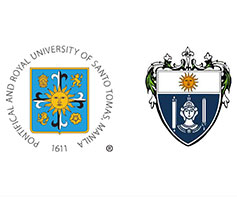ISSN 2619-7219
Volume 6, December 2018
EDITOR’S NOTE
Exploration—diving into new things—is the engine that drives innovation. In any competitive environment, there is always room for innovations and new things, and this ‘room’ prompts the need for change, technological innovation capability, and high productivity. In 2018, the editorial board of AJELS decided to upgrade the journal to digital mode, which is open-access from Volume 1 onward. This shift to becoming an open-access journal was made possible through UST’s unparalleled support, particularly through the assistance of the University Journal Affairs Committee (UJAC). Now, AJELS democratizes access to relevant research findings concerning applied linguistics and language education. As an open-access publication, it opens itself for greater access for society at large and potentially for greater public engagement with research. Further, because online publication is paperless, the bold decision the UST Department of English took to upgrade AJELS to a fully digital mode is a significant contribution to taking care of the environment.
It is also my pleasure to announce the addition of three new editorial consultants: Dr. Ariane Macalinga Borlongan of Tokyo University of Foreign Studies, Tokyo, Japan; Dr. Shirley N. Dita of De La Salle University, Manila, The Philippines; and Dr. Aiden C. Yeh of Wenzao Ursuline University of Languages, Kaohsiung, Taiwan. They are all well known in academic circles and will surely bring a wealth of experiences to AJELS.
This volume features seven articles that deal with fertile areas of research in applied linguistics and language education such as language curriculum design, genre analysis, language learner autonomy, multimodal analysis, and linguistic landscape.
The first paper by Bilal Genç and Volkan Darmaz describes the initial language teacher education policy adopted in Turkey and examines English Language Teaching (ELT) student-teachers’ perceptions on the main components of initial teacher education (i.e., structure, knowledge and understanding, strategies and skills, and values) and their contribution to the student-teachers’ future profession.
In his research article “Move analysis of abstracts in applied linguistics research: The Middle East and North Africa (MENA) perspective,” Roy Randy Y. Briones endeavors to examine the moves that occur among a corpus of 29 semi-randomly selected online research article abstracts taken from three MENA-based journals in applied linguistics using Hyland’s (2000) Introduction-Purpose-Methods-Product-Conclusion (I-P-M-Pr-C) move structure as framework. It was found that Hyland’s move structure may be individually evident across the corpus, but it is not sequenced in the order that Hyland’s structure is originally presented. Such results may be attributed to some journal-writing conventions such as abstract length and specific practices in composing abstracts.
Another study in language curriculum design was undertaken by John Paul O. Dela Rosa and Rachelle B. Lintao, which, by utilizing the criteria set by the National Council of Teachers of English (NCTE) intended for English Language Arts (ELA) curriculum guides, reports on a textual evaluation of the existing curriculum guide in 10th grade English under the newly implemented K to 12 Basic Education Program in the Philippines. The findings revealed that the material generally suffices the criteria needed for a language curriculum guide. Moreover, the study underscores the importance of involving classroom teachers in the processes of creating, selecting, and evaluating curriculum materials.
The fourth research article, which is a much-needed paper on learner autonomy in the Philippines, by Vivien Sigrid B. Iñigo investigates how the liberal arts and natural sciences students differ in their beliefs and practices about learner autonomy, how autonomous they feel as English language learners, how learner autonomy helps them in second language learning, and how they differ in their views about the promotion of learner autonomy by their English language teachers.
Through a Systemic-functional Multimodal Discourse Analysis, Paulyene Adrienne S. Cayco and Josephine B. Alarcon explore the Light Rail Transit (LRT) Line 1’s use of semiotic resources, such as metafunctions and modes of language, in its publication materials. It was found that the main language choice of the LRT Line 1 is the material process in imperative mood, which is cohesively integrated through elliptical form as a way to communicate safety instructions to train passengers. Also, the discourse of safety is communicated through a narrative representation, which consists of specific modes such as image, gaze, social distance, and layout.
The sixth paper by Abegail N. Eclipse and Pia Patricia P. Tenedero describes the linguistic landscape (LL) of the Manila Central Post Office (MCPO), one of the landmark government offices in the Philippines. The study found that English is the dominant language of the signs found in the public-access spaces of the MCPO, and that most English signs serve referential and directive functions. Likewise, the interview data revealed vital implications for a review of government language policy Executive Order 335.
In her paper “Language proficiency and pedagogical strategies in the English-language classroom: Determinants of preservice teachers’ level of self-efficacy,” Donna Bel F. Sy aims to determine the relationships among the perceived levels of preservice English-language teachers’ self-efficacy beliefs, language proficiency, and pedagogical strategies. The paper likewise recommends language-training programs that can help boost the levels of language proficiency and self-efficacy of preservice English-language teachers.
The shift to open-access mode of AJELS hallmarks the attempt to initiate ‘change,’ which can eventually translate to innovation, creativity, or incentive for improvement. In a similar fashion, this initiative to make a ‘change’ is what propels linguistics scholars to explore uncharted territories in search of new discoveries and to push the boundaries of human knowledge.
This Volume 6 of AJELS owes its existence to several people, for without their help, support, and commitment, this labor of love will not have materialized. In particular, I thank Dr. Carolyn D. Castro of Montgomery College, Maryland, USA; Dr. Aiden C. Yeh of Wenzao Ursuline University of Languages, Kaohsiung, Taiwan; Dr. Azirah Hashim of University of Malaya, Kuala Lumpur, Malaysia; Dr. T. Ruanni F. Tupas of National Institute of Education, Singapore; Dr. Willy A. Renandya of National Institute of Education, Nanyang Technological University, Singapore; Dr. Christopher Conlan (formerly) of Curtin University, Perth, Australia; Dr. Lee Kooi Cheng of National University of Singapore; Dr. Ariane Macalinga Borlongan of Tokyo University of Foreign Studies, Tokyo, Japan; and Dr. Paolo Niño M. Valdez and Dr. Shirley N. Dita of De La Salle University, Manila, The Philippines.
VERONICO N. TARRAYO, Ph.D.
Editor, Asian Journal of English Language Studies

The views of ELT student-teachers on initial teacher education programme in Turkey through EPLTE
Bilal Genç & Volkan Darmaz
Inonu University, Malatya, Turkey

Move analysis of abstracts in applied linguistics research: The Middle East and North Africa (MENA) perspective
Roy Randy Y. Briones
Qatar University & University of Birmingham, United Kingdom

Guided or misguided?: Teachers’ evaluation of an English curriculum guide in the Philippines
John Paul O. Dela Rosa & Rachelle B. Lintao
Tarlac National High School-Annex; Philippine Normal University, Manila
University of Santo Tomas, Manila, The Philippines

Learner autonomy: Beliefs and practices of Filipino liberal arts and natural sciences English language learners
Vivien Sigrid B. Iñigo1
University of Santo Tomas, Manila, The Philippines

On modes, metafunctions, and communicative acts: A Systemic-functional Multimodal Analysis of Light Rail Transit (LRT) Line 1’s publication materials
Paulyene Adrienne S. Cayco & Josephine B. Alarcon
University of Santo Tomas, Manila, The Philippines

The linguistic landscape of Manila Central Post Offce: A macro-linguistic analysis
Abegail N. Eclipse & Pia Patricia P. Tenedero
University of Santo Tomas, Manila, The Philippines, Macquarie University, Australia

Language profciency and pedagogical strategies in the English-language classroom: Determinants of preservice teachers’ level of self-effcacy
Donna Bel F. Sy
Romblon State University, The Philippines; De La Salle University-Manila,
The Philippines

